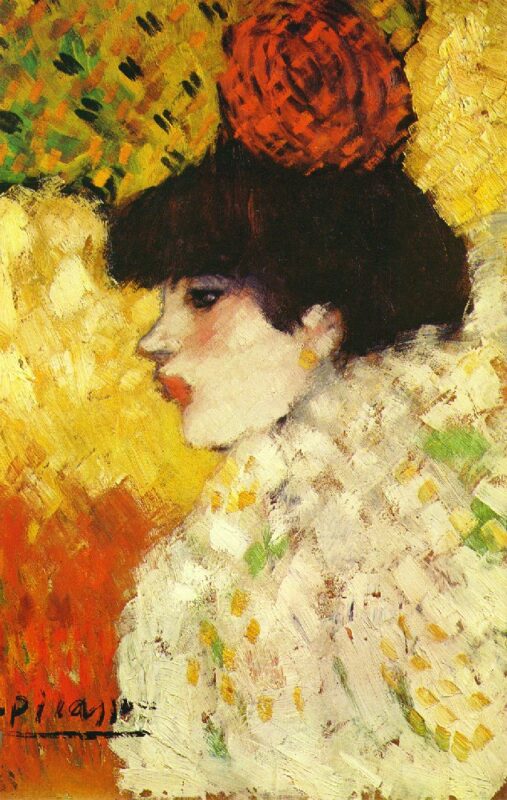Exploring Pablo Picasso’s Pioneering Artworks of the 1900s
Pablo Picasso’s artistic journey during the early 1900s marked a transformative period that laid the foundation for his groundbreaking contributions to modern art. This era witnessed the birth of his distinctive styles and the evolution of his creative genius, making it an essential chapter in understanding the Spanish master’s enduring legacy.
Picasso’s Formative Years in Paris (1900-1907)
In October 1900, the young Picasso ventured to Paris, the epicenter of the European art scene at the time. With a thirst for exploration and a desire to immerse himself in the city’s vibrant artistic community, he quickly established his presence in the bohemian district of Montmartre. During these formative years, Picasso’s works reflected a remarkable versatility, as he rapidly assimilated various influences and experimented with diverse styles.
Picasso’s Early Paintings: A Window into His Evolution
Picasso’s early paintings from this period offer a captivating glimpse into his artistic evolution. His artworks from 1900-1902, including portraits and depictions of city life, showcase his technical prowess and foreshadow the revolutionary path he would soon embark upon. One notable example is the painting “Le Moulin de la Galette” from 1900, which captures the essence of Parisian café culture with remarkable skill and sensitivity.
The Blue Period (1901-1904)
As Picasso’s personal life was marked by tragedy and hardship, his art took a somber turn, giving rise to the renowned Blue Period. From late 1901 to 1904, his paintings were dominated by shades of blue, reflecting themes of poverty, loneliness, and despair. Masterpieces such as “The Old Guitarist” and “La Vie” exemplify this melancholic phase, showcasing Picasso’s ability to convey profound emotions through his brushstrokes.
The Rose Period (1904-1906)
Following the introspective Blue Period, Picasso’s palette took on warmer hues, ushering in the Rose Period from 1904 to 1906. During this time, his art celebrated the joyous aspects of life, often depicting circus performers, acrobats, and harlequins. The famous “Family of Saltimbanques” from 1905 stands as a testament to this shift, capturing the vibrancy and energy of the traveling entertainers with a distinct sense of whimsy.
Picasso’s Sketchbooks: A Window into His Creative Process
Throughout his career, Picasso maintained a prolific sketching habit, filling numerous sketchbooks with drawings, studies, and explorations of various themes and techniques. These sketchbooks offer invaluable insights into his artistic process, revealing the genesis of many iconic works and showcasing his boundless creativity.
The Birth of Modernism: Picasso’s Pioneering Role
As the 1900s progressed, Picasso’s art underwent a revolutionary transformation, spearheading the birth of modernism in the art world. His bold experimentations with form and perspective laid the groundwork for the groundbreaking Cubist movement, which would forever alter the course of art history. Picasso’s relentless pursuit of innovation and his ability to challenge traditional conventions made him a towering figure in the avant-garde, inspiring generations of artists to come.
Frequently Asked Questions
Q: What is the significance of Picasso’s Blue Period?
A: The Blue Period, spanning from 1901 to 1904, marked a deeply introspective and emotionally charged phase in Picasso’s artistic journey. His use of somber blue hues and subject matter depicting poverty and melancholy reflected his personal struggles and the profound impact of loss and hardship on his psyche. This period is renowned for its poignant expression of human emotions and Picasso’s mastery of conveying profound sentiments through his art.
Q: How did Picasso’s time in Paris influence his artistic development?
A: Paris played a pivotal role in shaping Picasso’s artistic growth and exposing him to the avant-garde movements that would profoundly impact his work. The city’s vibrant cultural scene, with its cafés, galleries, and artistic communities, provided a fertile ground for Picasso to absorb diverse influences and experiment with new styles. It was in Paris that he developed his distinctive Blue and Rose Periods, laying the foundation for his later revolutionary contributions to modern art.
Q: What role did Picasso’s sketchbooks play in his creative process?
A: Picasso’s sketchbooks served as a visual diary, capturing his thoughts, observations, and artistic explorations. These notebooks were a constant companion, allowing him to document ideas, experiment with techniques, and refine his artistic vision. They offer invaluable insights into his creative process, revealing the genesis of many iconic works and showcasing the breadth of his artistic curiosity and innovation.
Metadescription: Explore Pablo Picasso’s groundbreaking artworks from the 1900s, including his Blue and Rose Period paintings, sketchbooks, and pioneering role in the birth of modernism and Cubism.






















































































































































































































































































